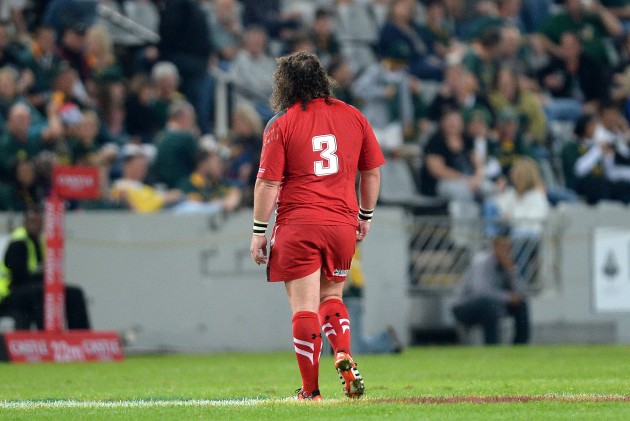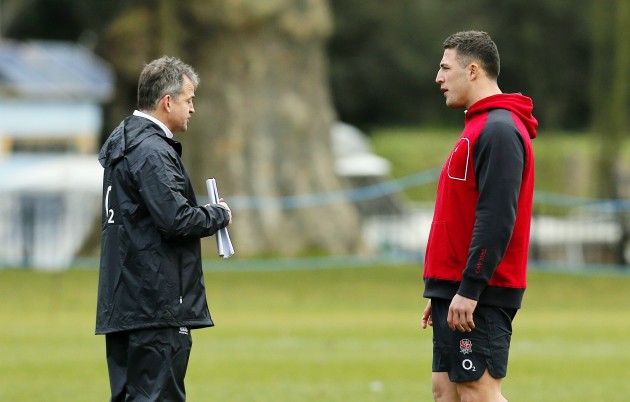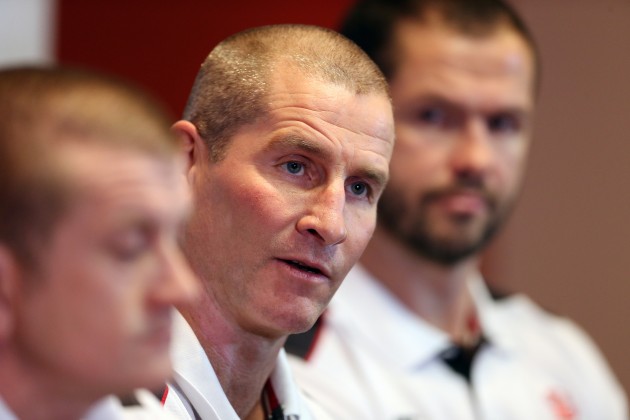The month of January threw up a number of talking points, none bigger than Adam Jones' retirement, Sam Burgess' progression and a bonafide England injury crisis
Adam Jones retires
January saw Adam Jones retire from test rugby and take his place alongside the grandees of Welsh rugby. He has had a fine career, featuring 95 caps for Wales and five for the British & Irish Lions. But whilst Jones’ caps are impressive his career can’t simply be measured in numbers. ‘Bomb’ introduced genuine stability to Wales’ set piece and ended a decade during which the Welsh scrum had been regarded, globally, as a weakness.
For eight years Adam Jones WAS the Welsh scrum and delivered a solidity of platform usually reserved for structures that sit amidst the North Sea. All three of Wales’ recent Grand Slams were built around the Welsh tight head and his scrummaging allowed a generation of Welsh backs and backrow forwards to flourish. This week Warren Gatland said that Jones’ retirement had come as a surprise. Although I’d imagine that Jones’ was more surprised when he found that the third choice tight head at his club was selected ahead of him for the Welsh squad. A baffling selection that ended a superb career.
Commercial and political pressure is hurting Sam Burgess’ development
January revealed exactly how much pressure Sam Burgess is under since his move from the NRL. Burgess is one of those unfortunate victims of professional sport where the commercial/ political pressure facing a player is as extreme as the playing pressure. The responsibility on his shoulders is massive, and exceeds anything that he can ‘military press’ in the gym. Despite a slow start to his union career, which is to be expected considering he has never played it before, an underlying commercial subtext means that Burgess has been fast tracked through union at a pace that simply doesn’t make sense.
Burgess’ progression is beyond ‘fast tracking’ and is verging on ‘Millennium Falcon’ tracking. 15 years ago code jumpers had a season in which to learn the game and would slowly move from the reserves into the first team and then to test level – if good enough. Sam Burgess however has gone straight into Bath’s first team, into the England Saxons’ squad and is now going to train with the full England squad – after a matter of months. Bath and England have a lot invested in Burgess. Let’s hope he doesn’t become the next Benji Marshall.
England are missing out on Armitage. World rugby is missing out on Giteau
In the UK, Steffon Armitage receives the headlines for his exclusion from test rugby due to playing outside his domestic league – he’s made a few other headlines in January too… However it is the exclusion of Matt Giteau, from the Wallabies team, which is more detrimental to rugby. Giteau, when injury free, is arguably the best player in the world. Although you’ll rarely hear his name mentioned in that context, as without test status many simply forget that he exists.

Still got it: Matt Giteau is still, pound for pound, one of the world’s best players (Pic Action Images)
His footwork, running angles and distribution are immaculate and have elevated him to the undisputed puppet master of Toulon and the Top 14 – in fact he’s more than the puppet master he is Jim Henson. Whilst we all understand the desire and need to keep domestic players in domestic leagues, preventing Giteau from playing at the World Cup is real loss for rugby. If I could release one player from their test nation’s restrictions on selecting overseas players, Giteau would get the vote every time.
Feeling sorry for Stuart Lancaster
It is rare to hear a Welshman sympathising with English rugby. This paragraph alone could see me wrapped in gaffa tape and frog-marched to the English border. But it is difficult not to empathise with Lancaster and the injuries that are blighting his Six Nations and World Cup preparations. Excluding the All Blacks, no team in the game could cope with losing so many first team players. Currently the list stands at between ten and twelve players – depending on the daily fitness updates. Even by rugby’s standards this is an extraordinary injury list. This is the type of mass injuring that unfolds on GTA 5 after a rampage with a baseball bat.
Even without an injury list the England coach had a number of combinations that were still very much undecided -particularly in the centres. Losing Brad Barritt, Luther Burrell, Kyle Eastmond and Manu Tuilagi, for varying periods, isn’t going to help that issue. Add Owen Farrell’s lengthy lay off to that list and Lancaster could be playing the entire Six Nations with a new 10/12/13 axis for each game. Stuart Lancaster will learn a lot about his squad during the next few weeks.
Is rugby clothing antiquated?
Over the past decade, rugby has become a genuinely professional game. The improvements in administration, strength and conditioning, and player welfare are staggering. Yet for some reason the clothing that players wear on the field hasn’t really changed during the last 80 years. Yes, the shirts are more aerodynamic and we now have grip strips and compression layers etc. However, it is strange that players essentially wear the same clothing during May and they do in the middle of January. The temperature differential between the recent European fixtures played in January and the upcoming World Cup warm up fixtures could be 12-15 degrees Celsius – yet players still stroll out in shorts, socks and a jersey for both.
Kelly Slater, the surfer, doesn’t wear the same clothing at Pipeline as he does at Mavericks. Professional golfers don’t wear the same clothing in the winter as the summer – so why do rugby players? As any back will tell you, waiting around for five scrum resets can be a long, cold grind where the extremities, particularly the fingers, can become numb. Yet 10 seconds later they will be expected to catch a zipped spiral pass with fingers that are as brittle as a Cadbury’s flake. It would be interesting to see if the ‘heat pads’ used by professional golfers could be slotted into the back pockets of players shorts – allowing them a place to keep their hands warm and malleable during long breaks in play. Just a thought.
Click here March 2015 to find out what’s in the March edition of Rugby World magazine – in shops now!








